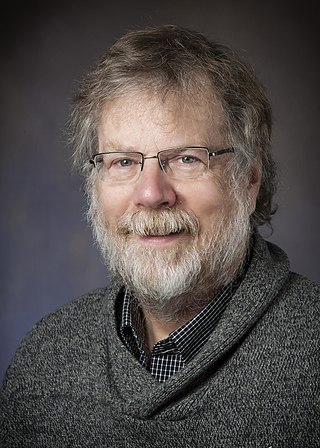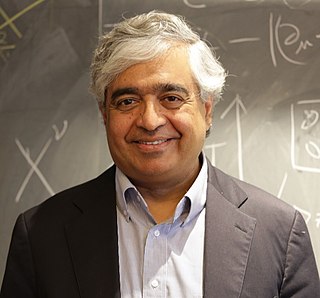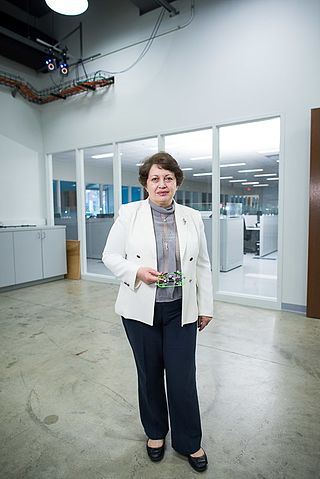Related Research Articles

John Bardeen was an American physicist and electrical engineer. He is the only person to be awarded the Nobel Prize in Physics twice: first in 1956 with William Shockley and Walter Brattain for the invention of the transistor; and again in 1972 with Leon N. Cooper and John Robert Schrieffer for a fundamental theory of conventional superconductivity known as the BCS theory.

Hans Albrecht Bethe was a German-American physicist who made major contributions to nuclear physics, astrophysics, quantum electrodynamics and solid-state physics, and received the Nobel Prize in Physics in 1967 for his work on the theory of stellar nucleosynthesis. For most of his career, Bethe was a professor at Cornell University.

Sir Anthony James Leggett is a British–American theoretical physicist and professor emeritus at the University of Illinois Urbana-Champaign (UIUC). Leggett is widely recognised as a world leader in the theory of low-temperature physics, and his pioneering work on superfluidity was recognised by the 2003 Nobel Prize in Physics. He has shaped the theoretical understanding of normal and superfluid helium liquids and strongly coupled superfluids. He set directions for research in the quantum physics of macroscopic dissipative systems and use of condensed systems to test the foundations of quantum mechanics.

Leo Philip Kadanoff was an American physicist. He was a professor of physics at the University of Chicago and a former president of the American Physical Society (APS). He contributed to the fields of statistical physics, chaos theory, and theoretical condensed matter physics.
Arkady Beynusovich (Benediktovich) Migdal was a Soviet physicist and member of the Academy of Sciences of the Soviet Union. He developed the formula that accounts for the Landau–Pomeranchuk–Migdal effect, a reduction of the bremsstrahlung and pair production cross sections at high energies or high matter densities.

Giorgio Parisi is an Italian theoretical physicist, whose research has focused on quantum field theory, statistical mechanics and complex systems. His best known contributions are the QCD evolution equations for parton densities, obtained with Guido Altarelli, known as the Altarelli–Parisi or DGLAP equations, the exact solution of the Sherrington–Kirkpatrick model of spin glasses, the Kardar–Parisi–Zhang equation describing dynamic scaling of growing interfaces, and the study of whirling flocks of birds. He was awarded the 2021 Nobel Prize in Physics jointly with Klaus Hasselmann and Syukuro Manabe for groundbreaking contributions to theory of complex systems, in particular "for the discovery of the interplay of disorder and fluctuations in physical systems from atomic to planetary scales".
David Pines was a US physicist recognized for his work in quantum many-body systems in condensed matter and nuclear physics. With his advisor David Bohm, he contributed to the understanding of electron interactions in metals. Bohm and Pines introduced the plasmon, the quantum of electron density oscillations in metals. They pioneered the use of the random phase approximation. His work with John Bardeen on electron-phonon interactions led to the development of the BCS theory of superconductivity. Pines extended BCS theory to nuclear physics to explain stability of isotopes with even and odd numbers of nucleons. He also used the theory of superfluidity to explain the glitches in neutron stars.

Francis Wheeler Loomis, born in Parkersburg, West Virginia, was an American scientist most widely known for his contributions in the field of physics. Loomis received his undergraduate degree and, in 1917, his PhD from Harvard University. His thesis was on thermodynamic measurements of mercury.

David Matthew Ceperley is a theoretical physicist in the physics department at the University of Illinois Urbana-Champaign or UIUC. He is a world expert in the area of Quantum Monte Carlo computations, a method of calculation that is generally recognised to provide accurate quantitative results for many-body problems described by quantum mechanics.

Subir Sachdev is Herchel Smith Professor of Physics at Harvard University specializing in condensed matter. He was elected to the U.S. National Academy of Sciences in 2014, received the Lars Onsager Prize from the American Physical Society and the Dirac Medal from the ICTP in 2018, and was elected Foreign Member of the Royal Society ForMemRS in 2023. He was a co-editor of the Annual Review of Condensed Matter Physics 2017–2019, and is Editor-in-Chief of Reports on Progress in Physics 2022-.
John Charles Wheatley was an American experimental physicist who worked on quantum fluids at low and very low temperatures.
Lev Petrovich Pitaevskii was a Russian theoretical physicist, who made contributions to the theory of quantum mechanics, electrodynamics, low-temperature physics, plasma physics, and condensed matter physics. Together with his PhD supervisor Evgeny Lifshitz and with Vladimir Berestetskii, he was also the co-author of a few volumes of the influential Landau–Lifschitz Course of Theoretical Physics series. His academic status was professor.
The William I. Fine Theoretical Physics Institute is a research institute in the University of Minnesota College of Science and Engineering. FTPI was largely the work of physics Professor Emeritus, Stephen Gasiorowicz and university alumnus and Twin Cities real-estate developer William I. Fine. The institute officially came into existence in January 1987. FTPI faculty consists of six permanent members: Andrey V. Chubukov, Alex Kamenev, Keith Olive, Maxim Pospelov, Mikhail Shifman, and Boris Shklovskii. The institute has on Oversight Committee consisting of ten members. The Oversight Committee is the board of directors that make decisions concerning the staffing and budgeting of the institute.
Elihu Abrahams was a theoretical physicist, specializing in condensed matter physics.

Naira Hovakimyan is an Armenian control theorist who holds the W. Grafton and Lillian B. Wilkins professorship of the Mechanical Science and Engineering at the University of Illinois at Urbana-Champaign. She is the director of AVIATE Center of flying cars at UIUC, funded through a NASA University Leadership Initiative. She was the inaugural director of the Intelligent Robotics Laboratory during 2015–2017, associated with the Coordinated Science Laboratory at the University of Illinois at Urbana-Champaign.
Lillian Hartman Hoddeson is an American historian of science, specializing in the history of physics and technology during the 2nd half of the 20th century.
Eduardo Hector Fradkin is an Argentinian theoretical physicist known for working in various areas of condensed matter physics, primarily using quantum field theoretical approaches. He is a Donald Biggar Willett Professor of Physics at the University of Illinois at Urbana–Champaign, where he is the director of the Institute for Condensed Matter Theory, and is the author of the books Quantum Field Theory: An Integrated Approach and Field Theories of Condensed Matter Physics.
Shivaji Lal Sondhi is an Indian-born theoretical physicist who is currently the Wykeham Professor of Physics in the Rudolf Peierls Centre for Theoretical Physics at the University of Oxford, known for contributions to the field of quantum condensed matter. He is son of former Lok Sabha MP Manohar Lal Sondhi.
Tin-Lun "Jason" Ho is a Chinese-American theoretical physicist, specializing in condensed matter theory, quantum gases, and Bose-Einstein condensates. He is known for the Mermin-Ho relation.
Christopher John Pethick is a British theoretical physicist, specializing in many-body theory, ultra-cold atomic gases, and the physics of neutron stars and stellar collapse.
References
- ↑ Prize Recipient
- ↑ Prize Recipient
- ↑ Genzlinger, Neil (June 22, 2018). "Nina Baym, Who Brought Novels by Women to LIght, Dies at 82". The New York Times.
- ↑ "Lillian E. Hoddeson". University of Illinois Archives.
- ↑ "Book of Members, 1780-2010: Chapter B" (PDF). American Academy of Arts and Sciences. Retrieved May 28, 2011.
- ↑ "Online directory". National Acacdemy of Sciences. Retrieved December 13, 2011.